The Temple of Apollo Epicurius at Bassae is one of the most imposing and important temples of classical antiquity and has been much studied for its unique architectural features. It is set on the slopes of Mt Kotilion, an area scored with ravines (in ancient Greek Bassae means ravines). This had long been the location of a sanctuary dedicated to Apollo with an earlier temple dating to the 7th century BC. The surviving temple was built around 420 BC probably by the celebrated architect Iktinos who had also worked on the Parthenon in Athens.
History
Bassae was first occupied in the Archaic period and was the location of a sanctuary devoted to Apollo. This was founded by the inhabitants of the nearby ancient city of Phigaleia some 13km away to which it was connected by a sacred road.
The sanctuary was built on the slower slopes of Mt Kotolion. Residents of Bassae were also responsible for another sanctuary higher up the mountain which was dedicated to Artemis and Afrodite.
In the late 7th century BC the first temple at Bassae was built and was given the name of Apollo Epicurios (Apollo the healer or helper). This temple was reconstructed two or three times during the 6th century BC becoming successively larger and more elaborate.
The latest and surviving temple was built in the late 5th century between 420 and 400 BC. This was during the period of the Peloponnesian War which led to prolonged interruptions to its construction.
As a result of the site’s inaccessibility, the only historical records are those of Pausanias who visited Bassae in 174 AD. He was highly impressed and rated it as one of the finest temples in the Peloponnese, second only to the temple of Athena Alea at Tegea. According to Pausanias, it was designed by the celebrated 5th century architect Iktinus who was also responsible for the Parthenon in Athens.
Most temples in Greece were built with the entrance door facing east, however the temple at Bassae was one of the few that were oriented north-south. The temple is also unusual in that it incorporates elements from all three orders of classical Greek architecture: Doric, Ionic and Corinthian. It had a single central Corinthian column separating two sections and this is the earliest known example of a Corinthian capital.
With the defeat of the Spartans in 371BC and the establishment shortly afterwards of the Arcadian League leading in turn to the founding of the new capital city of Megalopolis, Bassae gradually began to decline in importance. However the temple was still in use until the 4th or 5th centuries AD when all such pagan temples were forcibly closed. After this it was abandoned and the roof was left to fall into disrepair until it eventually collapsed. It didn’t help that the iron fixtures holding the walls together were taken away as scrap metal. A number of major earthquakes caused further damage.
For many centuries the site was almost totally forgotten until a French architect, Joachim Bocher stumbled upon it in 1765. Bocher had read Pausanias and recognised Bassae for what it was but when five years later he attempted to revisit the site he was killed by brigands. As it happened he had already mentioned the find to the English Antiquary Richard Chandler.
In 1812 a group of British Antiquarians were given permission by the Ottoman commander on the Peloponnese, Veli Pasha, to survey the site. After paying a bribe to Veli Pasha they removed the 23 large slabs which made up the 31 metre Ionic Cella Frieze along with some other sculptures. In 1815 these were purchased at auction by the British Museum (with obvious comparisons to the issue of Lord Elgin and the Parthenon marbles).
Excavations and Conservation
Systematic excavations began in 1902 and were conducted by the Greek Archaeological Society. More parts of the Ionic frieze were uncovered and these are now in the Greek National Archaeological Museum.
Since 1965 attention has been focussed on the conservation and restoration of the temple which in 1982 became the responsibility of the “Committee for the Conservation of the Temple of Apollo Epikurios” under the auspices of the Ministry of Culture. In 1987 a large marquee was installed over the temple to protect it from the severe local weather conditions until conservation work is completed.
Click here for information on tickets, opening hours etc
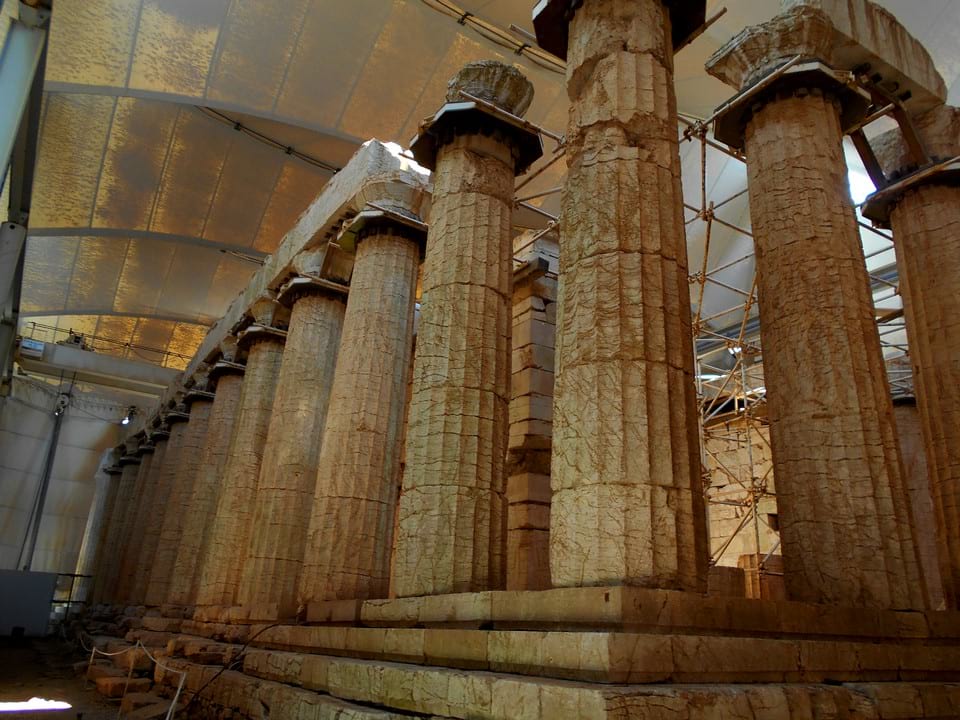


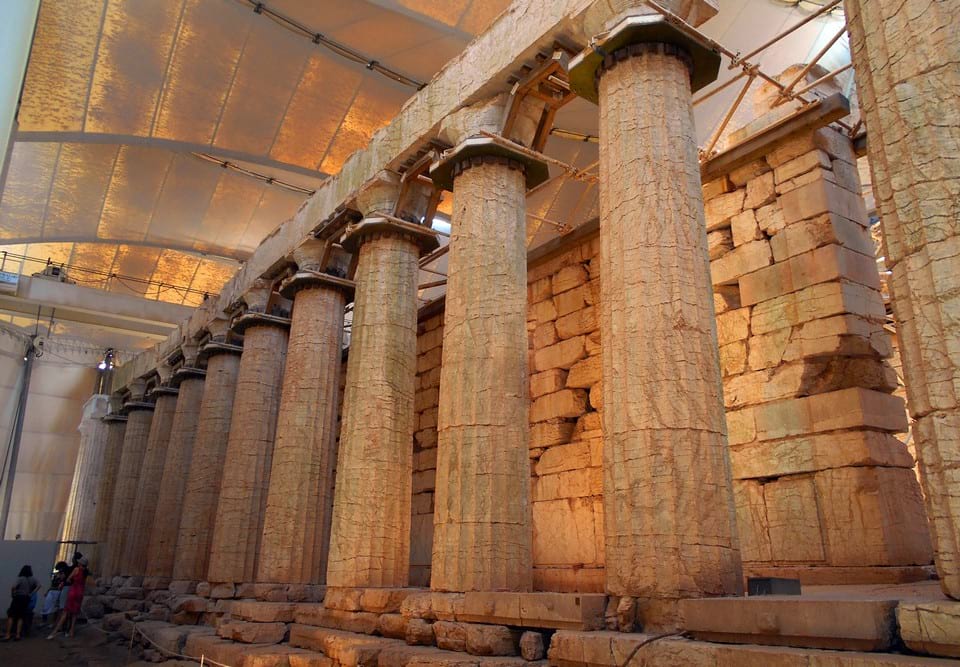
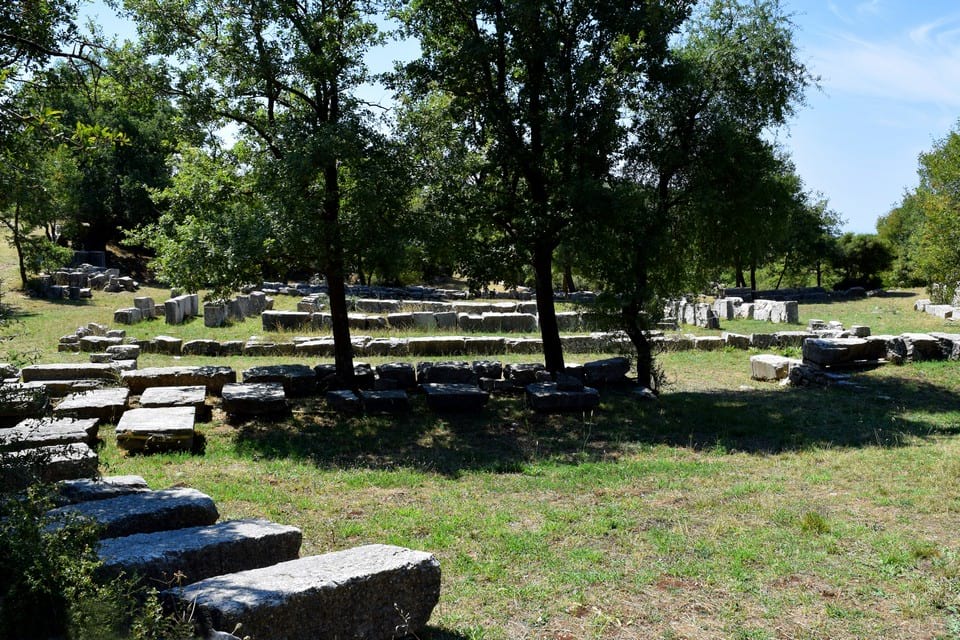

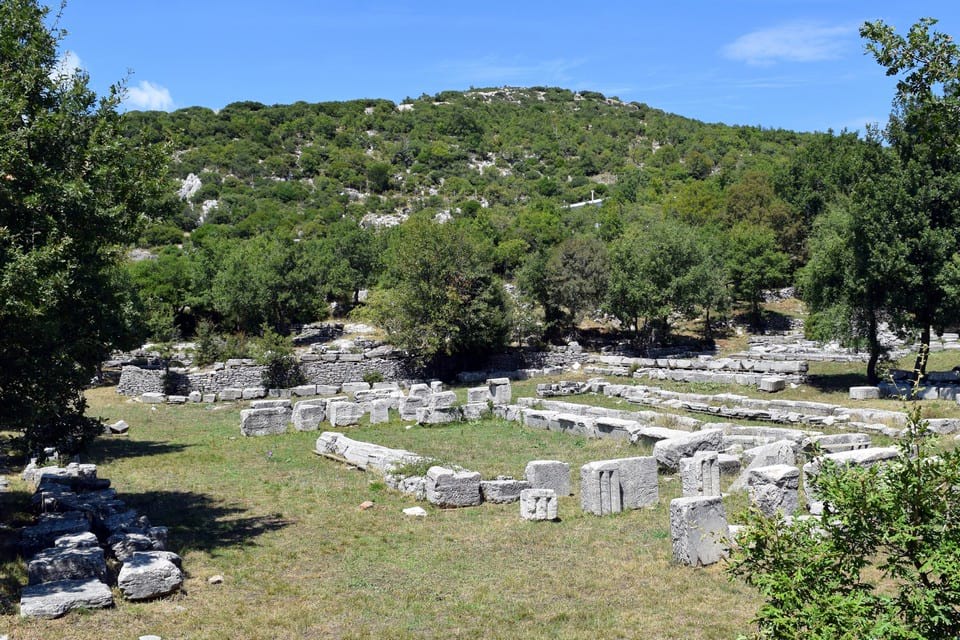
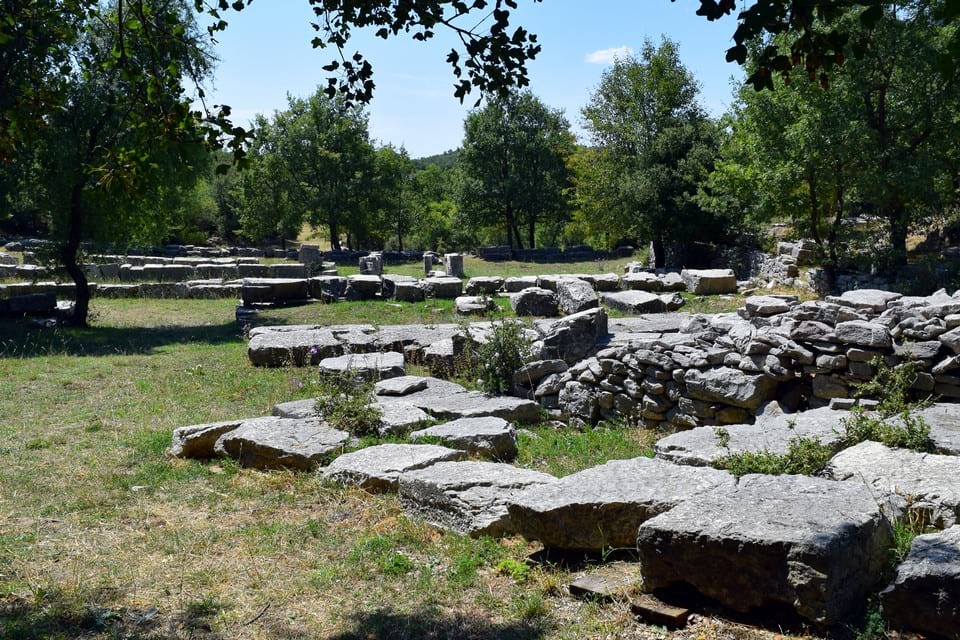
,_about_420-400_BC,_British_Museum_(14237128366).jpg) Temple of Apollo Epikourios at Bassae before the canopy. © Carole Raddato / WikiCommons
Temple of Apollo Epikourios at Bassae before the canopy. © Carole Raddato / WikiCommons